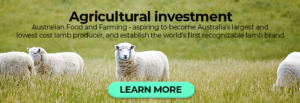Innovative farming practices for increasingly drought-stricken land
Ongoing drought and the US-China trade war is projected to significantly hit the Australian agriculture industry. According to the Australian Bureau of Agricultural and Resource Economics and Sciences (ABARES), agriculture is likely to hit a four-year low this year.
Ongoing drought and the US-China trade war is projected to significantly hit the Australian agriculture industry. According to the Australian Bureau of Agricultural and Resource Economics and Sciences (ABARES), agriculture is likely to hit a four-year low this year.
While the US-China trade war has created some short-term opportunities for Australian farmers, it will ultimately lead to long-term implications that outweigh short-term benefits. Drought has also dragged production down as it continues to hit the cropping sector hard – which typically accounts for 15% of the value of Australian exports.
ABARES mentions that “if drought conditions across south-eastern Australia were to extend to 2020-21, the national crop production and exports are likely to decline as they have for the past three years”.
Drought has also greatly affected the livestock sector, which is expected to continue destocking.
Several environmental issues like climate change and drought contribute to the loss of fertile soil and biodiversity. Coupled with the loss of indigenous seeds and knowledge, they present a significant threat to our future. According to scientists, our soil is being destroyed at an alarming pace and within 50 years, we would be facing damage to public health because of a qualitatively degraded food supply. This may also result in diminished nutrition and minerals and the destruction of enough arable topsoil to support the world’s growing population.
Growing awareness and evidence of the impact of industrial agriculture on the environment, climate, public health, farming communities, and local economies have led to an “underground insurgency” as Charles Massy calls it, to transform the practice and culture of agriculture. One such practice is regenerative agriculture or farming which encourages an interdependent relationship between humans and the land “aiming to renew the health of ecosystems, the nutritional integrity of the food supply and the vitality of communities. In a continent known for relentless droughts and flooding rains, the philosophy and practice of regenerative agriculture are beginning to permeate farming and rural communities across Australia” according to Charles Massy.
Regenerative farming has been successfully practiced by a relatively small number of farmers across Australia for many years. They practice a holistic approach to land management that keeps water in the landscape, improves soil health, stores carbon and increases biodiversity. This approach has proved to support increases in productivity over traditional methods. These farmers have significantly turned around their farm’s capacity to deal with drought and store plenty of water and grass for their livestock even as drought intensifies across the country.

A national study commissioned by the Federal Department of Environment found that regenerative farming practices “have the potential to increase the health of Australia’s grassy woodlands and at the same time improve financial and farmer wellbeing”. The study showed that regenerative farmers had above-average profit levels, especially in dry years. Most farmers are not ready to change their farming practices, break tradition and venture into regenerative farming. Among one of the few successful farms that have adapted regenerative agriculture successfully is the Australian Food & Farming (AFF) which ranks as one of the larger sheepmeat producers in Australia. The scale of its business is an important factor in becoming more efficient and driving down costs.
AFF envisions developing biodiverse landscapes, biologically enriched soil, and healthy food through ecologically and ethically driven farming processes.
Australian Food & Farming is committed to becoming Australia’s largest and lowest cost lamb producer. It considers itself stewards of the land and recognises the important interrelationship between soil, plants, animals, the environment, and humans.
Its regenerative agriculture practices have resulted in comparable or better yields with increase production resilience. It has lower operating costs because of less reliance on external inputs like fertiliser or chemicals.
AFF’s farms have achieved greater climatic resilience because healthy soils cope better with droughts and floods.
An increased ability to sell to higher-value markets, such as consumers of organic or grass-fed products, has enabled AFF to have higher profitability with less volatility as its holistic farms are more adaptive and able to respond better to climatic and biological variability. These are just some of the key points that set AFF apart from other farmers in Australia.
By the end of next year, AFF is targeting a breeding flock of 20,000 heads as it builds scale through natural growth and purchases.
Investors interested in finding out more about Australian Food & Farming, and how to get involved, by visiting their Investor Centre.
*Reach Markets are the advisors assisting with the management of this offer and may receive fees depending on whether an offer is taken up by investors.
*Reach Markets have been engaged by AFF to assist with private investor management.
General Advice Warning
Any advice provided by Reach Markets including on its website and by its representatives is general advice only and does not consider your objectives, financial situation or needs, and you should consider whether it's appropriate for you. This might mean that you need to seek personal advice from a representative authorised to provide personal advice. If you are thinking about acquiring a financial product, you should consider our Financial Services Guide (FSG) including the Privacy Statement and any relevant Product Disclosure Statement or Prospectus (if one is available) to understand the features, risks and returns associated with the investment.
Please click here to read our full warning.
